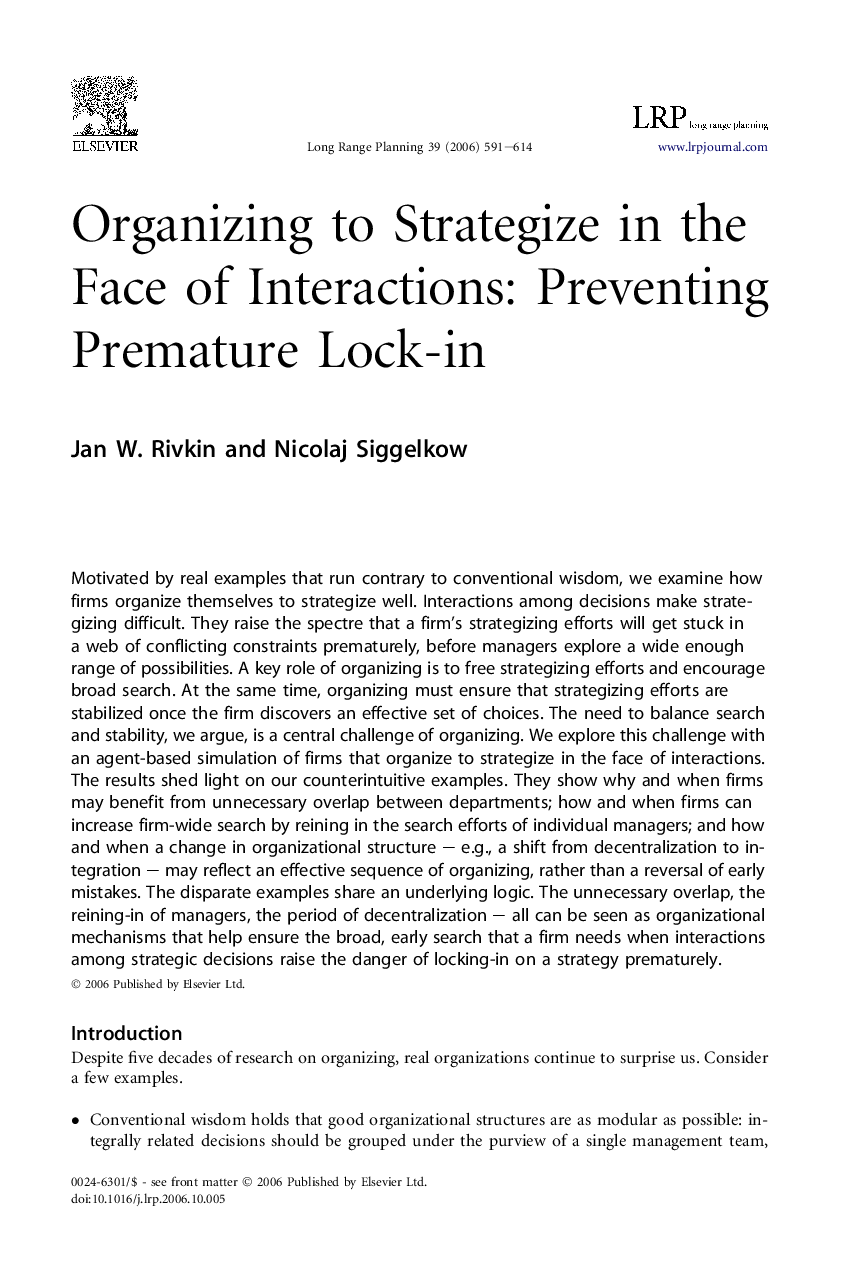| Article ID | Journal | Published Year | Pages | File Type |
|---|---|---|---|---|
| 1021708 | Long Range Planning | 2006 | 24 Pages |
Motivated by real examples that run contrary to conventional wisdom, we examine how firms organize themselves to strategize well. Interactions among decisions make strategizing difficult. They raise the spectre that a firm's strategizing efforts will get stuck in a web of conflicting constraints prematurely, before managers explore a wide enough range of possibilities. A key role of organizing is to free strategizing efforts and encourage broad search. At the same time, organizing must ensure that strategizing efforts are stabilized once the firm discovers an effective set of choices. The need to balance search and stability, we argue, is a central challenge of organizing. We explore this challenge with an agent-based simulation of firms that organize to strategize in the face of interactions. The results shed light on our counterintuitive examples. They show why and when firms may benefit from unnecessary overlap between departments; how and when firms can increase firm-wide search by reining in the search efforts of individual managers; and how and when a change in organizational structure – e.g., a shift from decentralization to integration – may reflect an effective sequence of organizing, rather than a reversal of early mistakes. The disparate examples share an underlying logic. The unnecessary overlap, the reining-in of managers, the period of decentralization – all can be seen as organizational mechanisms that help ensure the broad, early search that a firm needs when interactions among strategic decisions raise the danger of locking-in on a strategy prematurely.
